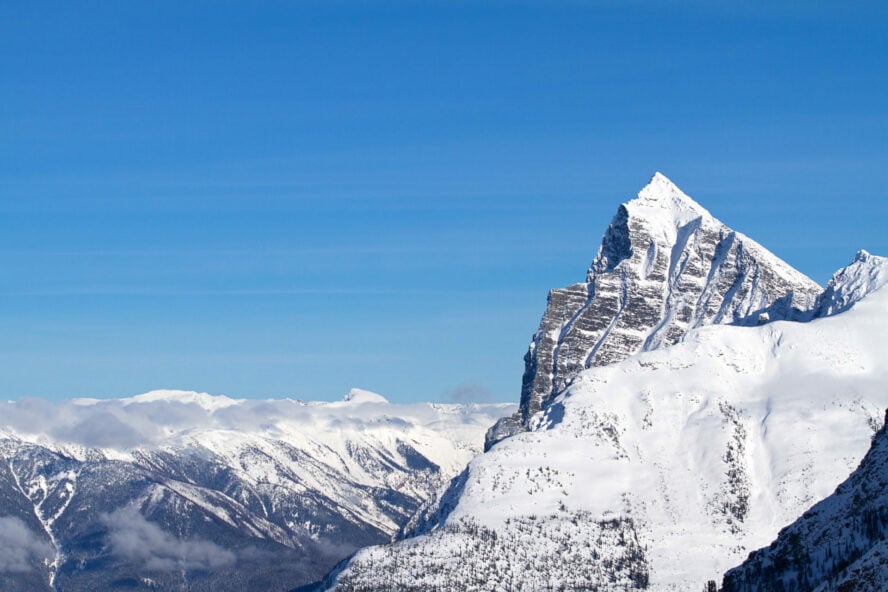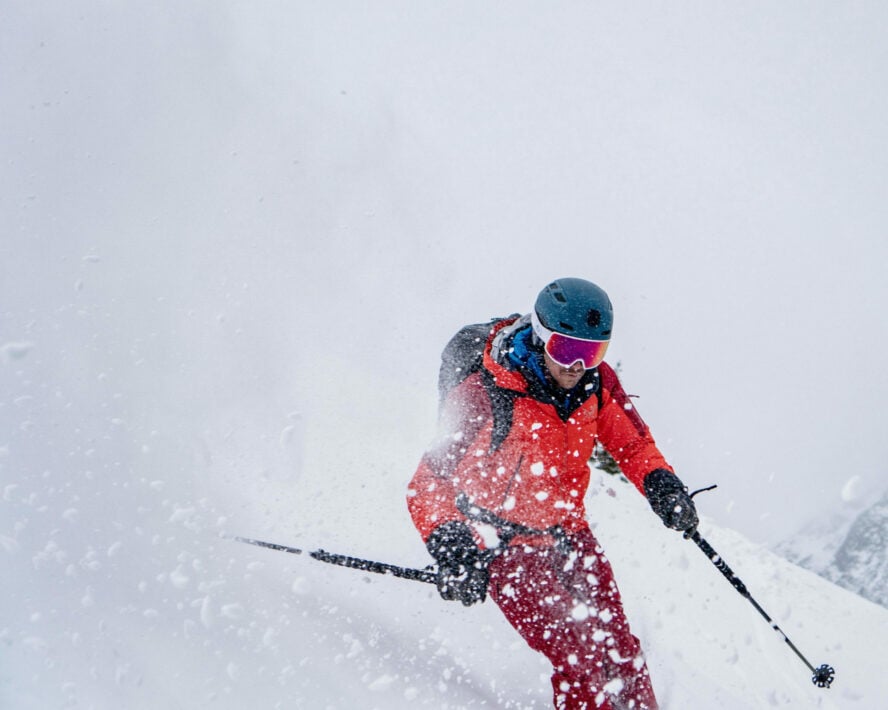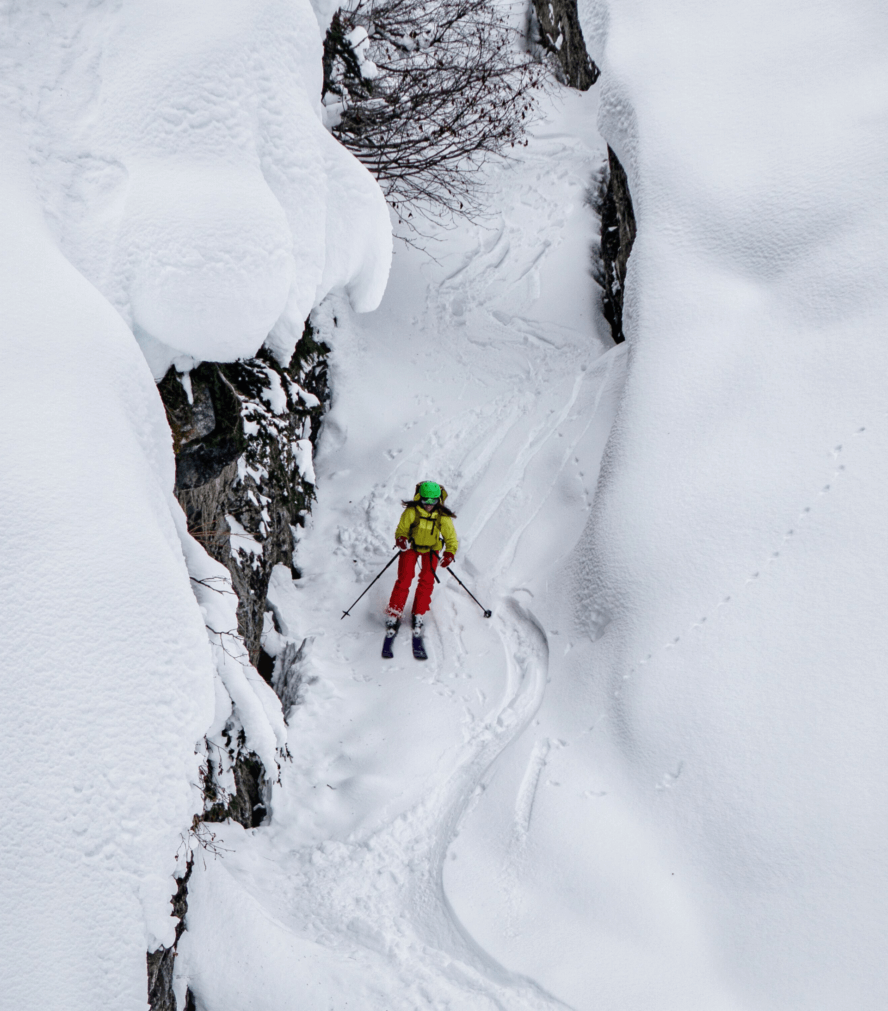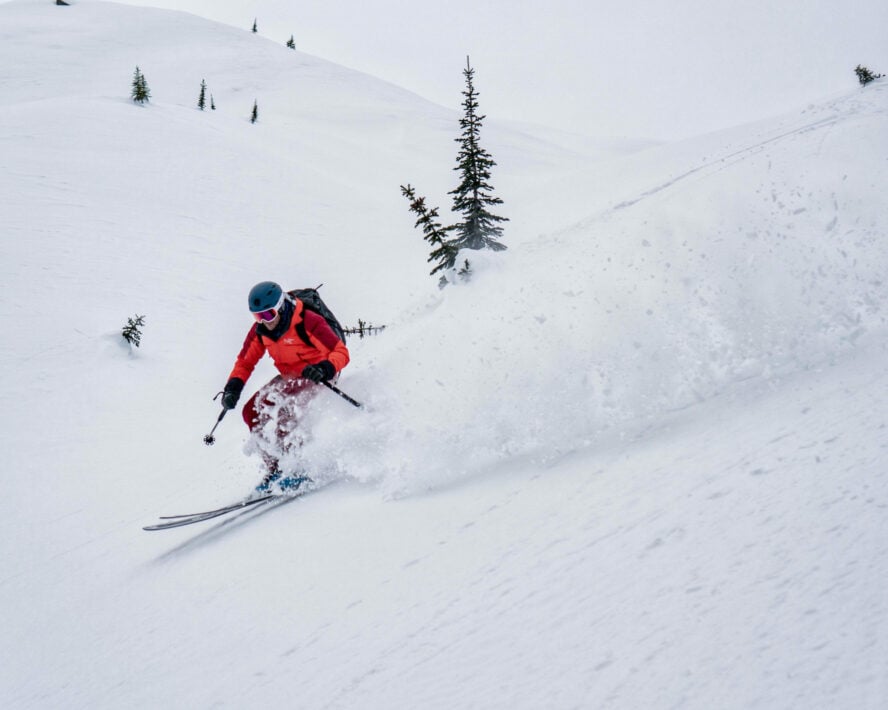As Travis Rice recently told me at a party, “There is nothing like Rogers Pass, it is the 7th wonder of the world.”
Rice and many, many other people feel the same way. Rogers Pass is world renowned because it is home to some super accessible, yet highly complex ski touring terrain. You can literally park your car and get into the alpine in an hour (or less if you’re Greg Hill) but then again you can just as quickly lose your shirt if you don’t know exactly what you’re doing.

Pros and Cons of Skiing Rogers Pass
There’s much more to the area than skiing though, and a lot of effort went into making it the winter recreational mecca that it is today.
History! There’s cannons…
The creation of Rogers Pass was a marvel at the time of its inception. The pass is named after Major A. B. Rogers who was a surveyor hired by CP Rail to find the best way through the Selkirk mountains and connect the railway from Revelstoke to Golden. In the 1960s the Pass became a part of the Trans Canada Highway (TCH or HWY 1), and in 1995 the 134 slide paths that face the TCH became open for backcountry use via the Winter Permit System (WPS).
The safety of people using the TCH is first priority for those in charge of the area: Parks Canada and the Canadian Armed Forces. Together they are called Operation PALACI, and they are responsible for avalanche control for the entire area that comprises the Pass. It is the largest mobile avalanche control program in the world that uses live ammunition (yup, they use cannons).
To be clear, PALACI is doing avalanche control for the road, NOT for skiers. If you ski in Rogers Pass, you’re responsible for your own snow safety. Yes, Parks will come to your assistance if they can — pending the weather — but plan on waiting for at least an hour. They are not Air Zermatt. There are no helicopters waiting on site to save your butt.
The permit system is currently set up to ensure that skiers stay within the Winter Restricted Areas and NOT dip into the Winter Prohibited Areas (these are closed all winter AND are not better than the Winter Restricted Areas — you aren’t missing anything, trust me).
It’s very important to know where to go. Remember, it’s also super awesome that skiing is allowed at Rogers Pass at all. Most people who visit are 100% compliant with the WPS, but some aren’t and this is a major safety issue. So if you are visiting Rogers Pass for the first time, hire a guide!

Guides and Rogers Pass
There would be no recreation in Rogers Pass without guides. This may seem drastic, but if it weren’t for the Swiss Mountain Guides who were hired by CP Rail in 1899, there might not be mountain recreation in the pass to the extent that there is now.
Think of it this way, after 1899 more and more European guides came over. They saw Western Canada as a giant Alps – which it kinda is. Recreating became a draw to the area. This influx of guides making their way to Canada led to the inception of the ACMG (Association of Canadian Mountain Guides) which, in 1972, became the first non-European member of the International Federation of Mountain Guides Associations (IFMGA).
The ACMG is revered for having some of the most advanced and respected ski guides around and their knowledge of snow safety and avalanche training is respected throughout the the world.
With that said, many of you may have training and want to use your training in the mountains and feel self-sufficient. I get it, but if you aren’t regularly practicing companion avalanche rescues and regularly checking the avalanche forecast and you don’t have great map and compass skills, you should rethink going on your own. You can’t rely on your phone in the backcountry. This is especially true at the pass, which is all large and complex terrain. Think big, steep, glaciated and unforgiving.
Being guided doesn’t mean having your hand held. In fact, I don’t know any guide who likes to guide this way. For skiers out there who have some training, those who have no training and those who are just curious, here are some tips I did to make my trip with ski guide Greg Hill as awesome as possible.

Skiing!
Depending on conditions, you can ski Rogers Pass from early winter (November) through late spring. We met with Greg in late January, which meant for a shorter day, but the snow coverage was much better. Greg decided to take us to the Bonney Glacier access.
The existing skin tracks were a bit icy and all over the place, but since Greg spends most of his time in the area, he was able to navigate us out of the cluster and establish a good clean track. He decided to take us on an older route that not many people take and he admitted that he thought it was slower, but more scenic. These are the kind of gems you get from a guide.
It was scenic! We stopped for a break overlooking the Bonney Glaicer – it’s the glaciers in the pass that make the area one of the biggest draws to skiers around. But the glaciers are now receding and Greg pointed out to us just how much Bonney’s diminished since he’s lived in the area.
From there we wrapped around up towards the moraine where he reached his 2 million milestone. We kept going up until Greg found us a stash of untracked snow. Looking down we could see two other ski parties that decided to take the “shorter route.” They hadn’t skied down yet, and were still making their way up. The “longer scenic route” is always faster with a guide.

We skied down and entered into a super cool gully. From there, we made our way out and at one point Greg turned around, letting us know that some avalanches have reached where we were on the valley floor, which is incredible and makes one realize how small one is in the grand scheme of things.

Regardless if you’re skiing Rogers Pass or the Tetons, with or without Greg Hill, here’s some pointers that will ensure you have a great powder day:
Ensure your gear is sorted before the start of your trip
Depending on where you’re traveling from this can be tricky. Make sure your boots fit, your skis are tuned (to your liking) and you’re familiar with your snow safety gear (beacon, shovel, probe).
Get your fitness up
Ski touring with Greg Hill might seem intimidating (the guy climbed and skied 2 million feet one year), but he’s not! When he is guiding, he’ll climb and ski at what is called a “guide’s pace.” However, this doesn’t mean you should do nothing before your trip. Hike uphill, take the stairs whenever you can (if you are in an urban environment) and prepare your legs for skiing!
Be honest & realistic about your skill level and fitness
Most guides have ways to gauge if you are being realistic about your ability and past experiences, but save them the hustle and be honest and clear with respect to your fitness, your past touring experience and your downhill skiing movement skills. This way, they can select the best objective for you. Set yourself up for success by being realistic about your abilities and your goals.
Ask questions and learn!
Being guided doesn’t mean you don’t have to learn. Being guided helps you relax and enjoy the journey – your guide is breaking trail and making decisions. An excellent guide communicates the risks and generally involves their guest(s) in decision making. Mountain and Ski Guides thrive off of the enthusiasm of their guests and they like when you ask questions about the area, snowpack, terrain.
Eat up!
Seriously. I fail at this sometimes. Not just for the caloric intake, but because I get cold when I don’t eat a big meal before I tour. So do as I say, not as I do.
Layer properly and pack efficiently
On one of the first ski tours I ever did in Canada, I wore softshell pants. It was dumping. My guide made me change into GORE-Tex. Thank goodness. I was not prepared for how deep and upside down (when the top layer of the snow is dense and underlayer is soft) the powder was. Needless to say, those GORE-Tex pants came in handy since I found myself pulling myself out of the snow. Dress correctly for the weather and pack just enough layers for your transitions and breaks.




